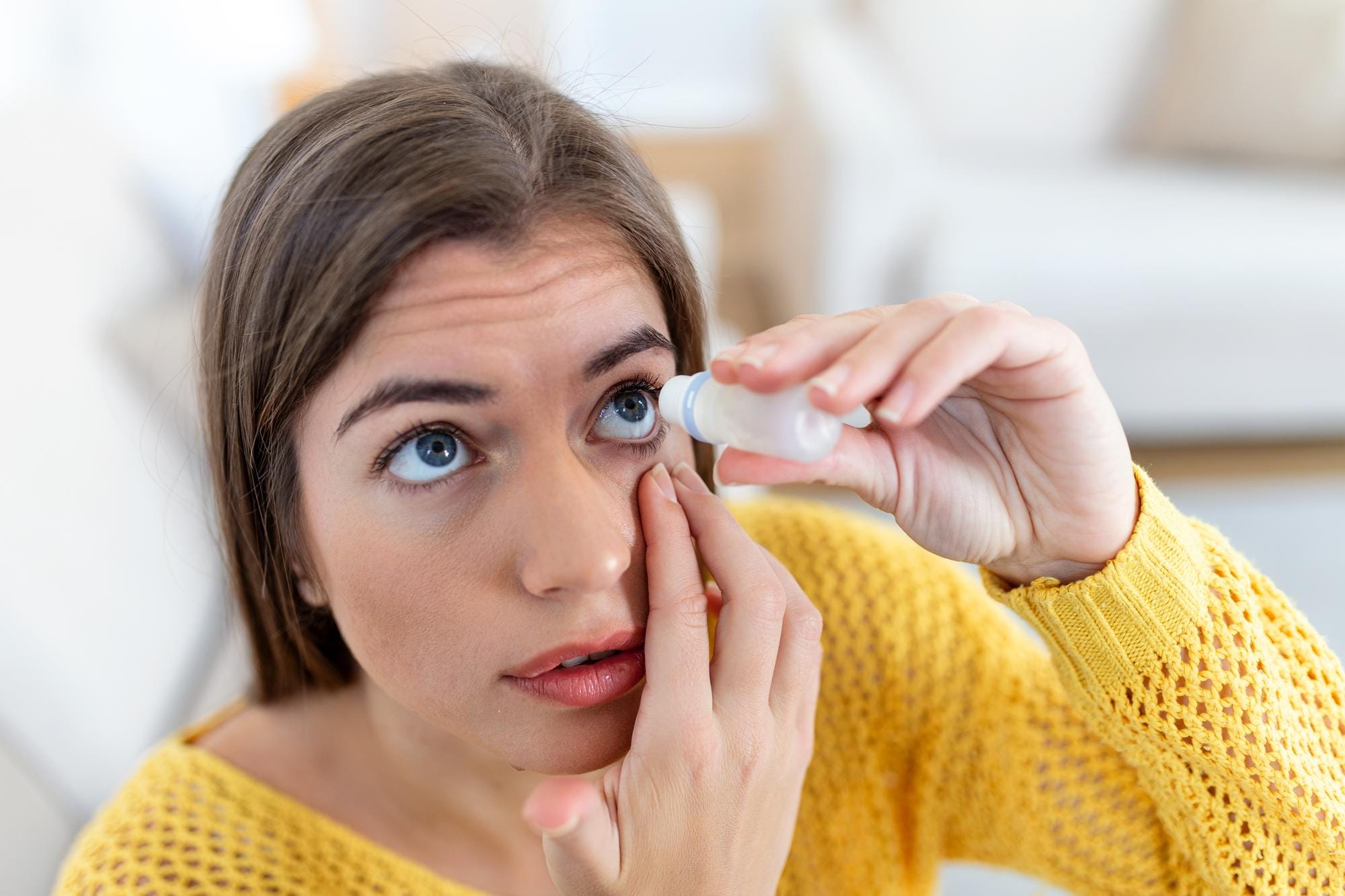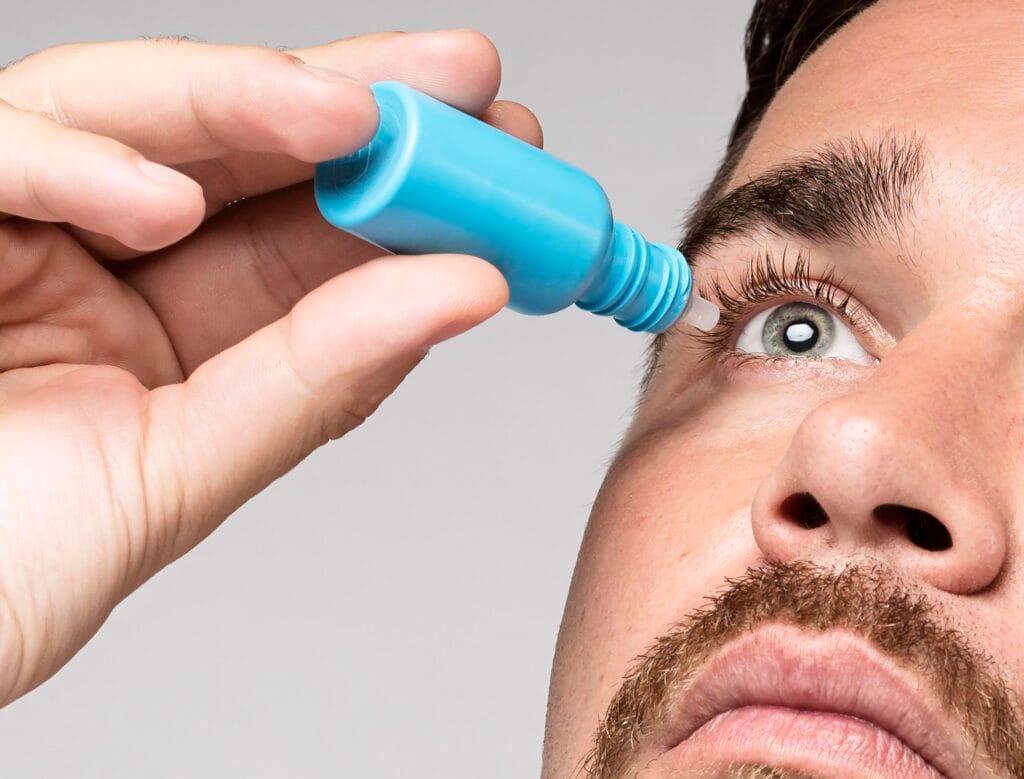
2 Important Characteristics that Determine the Safety and BPOM Distribution Permit for Eye Drop Products!

If the eyes feel dry or there is dust and dirt causing discomfort, some people may use a liquid known as eye drops. However, did you know that behind this simple liquid lies a very complex formulation process to ensure its safety for the eyes? Each drop must be designed with a balanced composition to prevent irritation or stinging.
Why Eye Drops Must Be Specially Formulated?
According to the Indonesian Pharmacopoeia, 6th Edition, ophthalmic solutions are sterile, free from foreign particles, and formulated and packaged in a way that makes them safe for ocular use. Since eye drops come into direct contact with the eyes, which are highly sensitive organs, their manufacturing process must adhere to strict formulation and production standards. The production of eye drops requires special attention to factors such as ingredient toxicity, isotonicity, pH balance, the need for preservatives, viscosity, and appropriate packaging.
Of these many aspects, there are two main properties that must be met in an eye drop formulation:
These two properties are key to ensuring eye drops are not only pharmacologically effective.
1. Isotonicity
In terms of tonicity, eye drops must be isotonic with tears, meaning they should have an isotonicity value equivalent to a 0.9% NaCl solution to ensure patient comfort and safety. Maintaining this isotonic value prevents osmotic pressure differences between the eye drops and natural tears, which could otherwise cause eye irritation. Ideally, ophthalmic formulations should match this isotonicity; however, the human eye can tolerate isotonicity values ranging from 0.6% to 2%, equivalent to NaCl solutions.
Hypotonic conditions should be avoided in eye drop formulations, whereas slightly hypertonic conditions are sometimes required to enhance drug absorption for a faster and more effective therapeutic effect. If an eye drop solution is hypotonic, it can be made isotonic by adding tonicity agents such as NaCl, KCl, glucose, glycerol, or buffering salts.
2. Isohydricity
In addition to being isotonic, eye drops must also be isohydric, meaning their pH should be as close as possible to the physiological pH of the eye (pH = 7.4) or within the range of 6.5–8.2 to minimize excessive tear production and eye irritation. If the formulated drug is stable at a pH range different from the isohydric pH, a buffer with low buffering capacity should be added. This allows the large volume of tears to dilute the drug upon administration, adjusting its pH to match that of natural tears. Conversely, if the buffering capacity is too strong, it may maintain an extreme pH (outside the isohydric range) for a longer period, increasing the risk of eye irritation.
Read more:
Tonicity: What does hypotonic, isotonic and hypertonic mean?
How to Determine Drug Effectiveness and Retention Time

Since ophthalmic preparations are generally available in solution, suspension, or semi-solid form, viscosity is another crucial factor as it affects the retention time and effectiveness of the drug in the eye. Eye drops should neither be too thick nor too thin, with an optimal viscosity range of 10–25 cP. If the formulated eye drop is too thin, synthetic viscosity-enhancing agents such as methylcellulose, polyvinyl alcohol, povidone, and carbomer 940/934P can be added.
Alternatively, natural viscosity enhancers such as xanthan gum, alginates, and gelatin can also be used. In conclusion, the formulation standards outlined above must be strictly followed to ensure both comfort and safety in eye drop usage. The concentration of each active ingredient and excipient in the formulation must comply with regulatory guidelines to prevent potential toxicity.
Additionally, eye drops must always remain sterile, which can be achieved by incorporating antimicrobial agents into the formulation in accordance with the requirements and guidelines for their use in ophthalmic preparations. To ensure your eye drops are truly safe, comfortable, and meet formulation standards, perform comprehensive laboratory testing at a reputable laboratory. Lab testing can check the tonicity, pH, sterility, and safety of active ingredients and excipients, ensuring your product is ready for use and meets health regulations.
Author: Devira
Editor: Sabilla
Refrences:
Ministry of Health of the Republic of Indonesia. Indonesian Pharmacopoeia, 6th Edition. Ministry of Health of the Republic of Indonesia. Jakarta: Ministry of Health of the Republic of Indonesia; 2020.
Gibson, M. (2015). Pharmaceutical Preformulation and Formulation. In Pharmaceutical Preformulation and Formulation. https://doi.org/10.1201/b14413.



